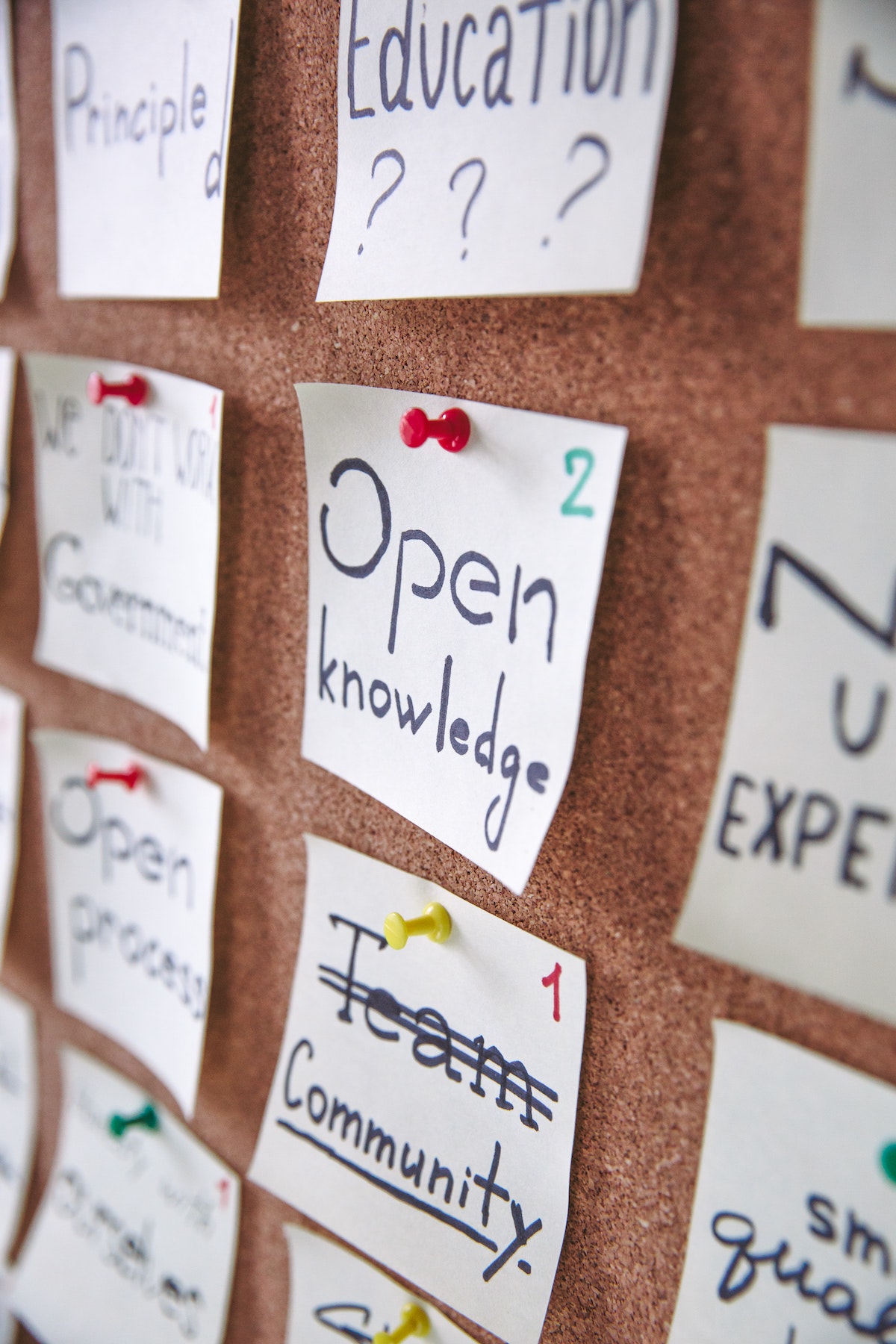 “Intelligence is knowing that Frankenstein is not the monster. Wisdom is knowing that Frankenstein is the monster.”
“Eat rocks,” said Google’s AI, apparently confusing people with ostriches. Meanwhile, Apple decided the best way to sell iPads was to literally crush musical instruments. Welcome to the wacky world of AI marketing, where billion-dollar companies with genius-level employees somehow keep making decisions that would embarrass a sleep-deprived intern.
These facepalm-inducing moments aren’t just amusing anecdotes; they’re symptoms of a larger problem in the tech industry: a critical lack of wisdom.
“Intelligence is knowing that Frankenstein is not the monster. Wisdom is knowing that Frankenstein is the monster.”
“Eat rocks,” said Google’s AI, apparently confusing people with ostriches. Meanwhile, Apple decided the best way to sell iPads was to literally crush musical instruments. Welcome to the wacky world of AI marketing, where billion-dollar companies with genius-level employees somehow keep making decisions that would embarrass a sleep-deprived intern.
These facepalm-inducing moments aren’t just amusing anecdotes; they’re symptoms of a larger problem in the tech industry: a critical lack of wisdom.
Why Smart Companies Make Dumb Mistakes
 “Intelligence is knowing that Frankenstein is not the monster. Wisdom is knowing that Frankenstein is the monster.”
“Eat rocks,” said Google’s AI, apparently confusing people with ostriches. Meanwhile, Apple decided the best way to sell iPads was to literally crush musical instruments. Welcome to the wacky world of AI marketing, where billion-dollar companies with genius-level employees somehow keep making decisions that would embarrass a sleep-deprived intern.
These facepalm-inducing moments aren’t just amusing anecdotes; they’re symptoms of a larger problem in the tech industry: a critical lack of wisdom.
“Intelligence is knowing that Frankenstein is not the monster. Wisdom is knowing that Frankenstein is the monster.”
“Eat rocks,” said Google’s AI, apparently confusing people with ostriches. Meanwhile, Apple decided the best way to sell iPads was to literally crush musical instruments. Welcome to the wacky world of AI marketing, where billion-dollar companies with genius-level employees somehow keep making decisions that would embarrass a sleep-deprived intern.
These facepalm-inducing moments aren’t just amusing anecdotes; they’re symptoms of a larger problem in the tech industry: a critical lack of wisdom.
 Let’s face it–the internet is a giant distraction engine.
Ever gone online to check the weather and somehow ended up watching a whole documentary about monarch butterfly migration? It’s like going to the store for milk and coming home with a live chicken.
The internet is designed to capture your attention and hold on to it like a puppy with a rope toy. And while that’s great for advertisers, it’s not so great for your own productivity or your precious and limited free time.
Let’s face it–the internet is a giant distraction engine.
Ever gone online to check the weather and somehow ended up watching a whole documentary about monarch butterfly migration? It’s like going to the store for milk and coming home with a live chicken.
The internet is designed to capture your attention and hold on to it like a puppy with a rope toy. And while that’s great for advertisers, it’s not so great for your own productivity or your precious and limited free time.
 Once upon a time, a scorpion needed to cross a river. He couldn’t swim, so he asked a frog he found by the riverbank for a ride on his back. The frog was hesitant at first. “What if you sting me?” he asked. The scorpion reasoned, “If I sting you, we both would drown!” So, the frog agreed, thinking it made sense.
Halfway across the river, the scorpion stung the frog.
Once upon a time, a scorpion needed to cross a river. He couldn’t swim, so he asked a frog he found by the riverbank for a ride on his back. The frog was hesitant at first. “What if you sting me?” he asked. The scorpion reasoned, “If I sting you, we both would drown!” So, the frog agreed, thinking it made sense.
Halfway across the river, the scorpion stung the frog.
 In a classic 3-act story structure, there’s a turning point at the end of the second act called “All Hope Is Lost”.
If world history was a story with us as characters, the All Hope Is Lost moment would be now.
At least that’s what I was thinking when I watched a video from the Stockholm Impact Week where Daniel Schmachtenberger explains the Metacrisis.
If our story is going to have a happy ending, the protagonist (that’s us) is going to have to do something difficult and heroic.
In a classic 3-act story structure, there’s a turning point at the end of the second act called “All Hope Is Lost”.
If world history was a story with us as characters, the All Hope Is Lost moment would be now.
At least that’s what I was thinking when I watched a video from the Stockholm Impact Week where Daniel Schmachtenberger explains the Metacrisis.
If our story is going to have a happy ending, the protagonist (that’s us) is going to have to do something difficult and heroic.
 Yesterday, Sam Altman, the CEO of OpenAI, was suddenly fired by the board of directors, and Greg Brockman, co-founder and president, quit in solidarity. Ilya Sutskever, the company’s chief scientist and a member of its board, defended the decision in a company all-hands meeting. The only thing we know is that the company says Mr. Altman “was not consistently candid in his communications” with the board.
Ilya Sutskever has a Ph.
Yesterday, Sam Altman, the CEO of OpenAI, was suddenly fired by the board of directors, and Greg Brockman, co-founder and president, quit in solidarity. Ilya Sutskever, the company’s chief scientist and a member of its board, defended the decision in a company all-hands meeting. The only thing we know is that the company says Mr. Altman “was not consistently candid in his communications” with the board.
Ilya Sutskever has a Ph.
 Community is a lot harder to foster than productivity. It’s also a lot more important, in the long run. Community is hard to build and easy to destroy. It requires patience, emotional intelligence, a willingness to trust, a willingness to be vulnerable, and a sense of humor.
Detour: Team vs Community In the context of business we often borrow a sports metaphor and call the people we work with our “team”.
Community is a lot harder to foster than productivity. It’s also a lot more important, in the long run. Community is hard to build and easy to destroy. It requires patience, emotional intelligence, a willingness to trust, a willingness to be vulnerable, and a sense of humor.
Detour: Team vs Community In the context of business we often borrow a sports metaphor and call the people we work with our “team”.
 Years ago, my friend Doug – one of the smartest engineers I’ve ever worked with – was sitting at his desk at work, leaning back in his chair and thinking hard about the problem he was trying to solve. The CEO of the startup he worked for sauntered past Doug’s office, then stepped back a few steps and looked in at Doug, who appeared to be staring blankly off into the distance.
Years ago, my friend Doug – one of the smartest engineers I’ve ever worked with – was sitting at his desk at work, leaning back in his chair and thinking hard about the problem he was trying to solve. The CEO of the startup he worked for sauntered past Doug’s office, then stepped back a few steps and looked in at Doug, who appeared to be staring blankly off into the distance.
 What is servant leadership anyway? What does it have to do with motivation, alignment, and purpose? I’ve been reading and thinking about that lately.
When I first heard the term “servant leader” I immediately thought I understood where it came from. Many of the worst managers I’ve seen seem to gravitate towards the role because of ego and a desire to be seen as better or more successful than others.
What is servant leadership anyway? What does it have to do with motivation, alignment, and purpose? I’ve been reading and thinking about that lately.
When I first heard the term “servant leader” I immediately thought I understood where it came from. Many of the worst managers I’ve seen seem to gravitate towards the role because of ego and a desire to be seen as better or more successful than others.
 According to the Wikipedia article on Writer’s Block, Herman Melville stopped writing novels a few years after writing Moby Dick, due to writer’s block.
Who knows? Perhaps without that, the world might have seen a sequel named “Gilbert Gator”, in which an eccentric Captain Featherboot leads a shipful of befuddled mariners in the swampy bayous of Louisiana in pursuit of a toothless, albino alligator named Gilbert, believed by some to be the last of the dinosaurs.
According to the Wikipedia article on Writer’s Block, Herman Melville stopped writing novels a few years after writing Moby Dick, due to writer’s block.
Who knows? Perhaps without that, the world might have seen a sequel named “Gilbert Gator”, in which an eccentric Captain Featherboot leads a shipful of befuddled mariners in the swampy bayous of Louisiana in pursuit of a toothless, albino alligator named Gilbert, believed by some to be the last of the dinosaurs.